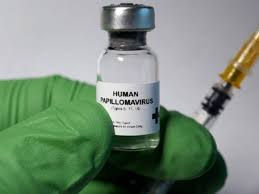the role of vaccines preventing STDS in India
- Advait Singh
- Aug 11, 2024
- 3 min read

Sexually transmitted diseases remain one of the significant public health problems facing India, infecting millions of its citizens. The classical model of preventing STDs has been through promoting safe sex practices—essentially, the use of condoms—followed by regular screening and early treatment. With the coming of vaccines that target certain STDs, like human papillomavirus, the arsenal of public health in India will be replenished by a formidable tool, promising hope for easing the burden of these infections.
The introduction of the HPV vaccine in India is therefore very important in preventing sexually transmitted diseases. HPV is an infection that is very common and may result in warts, although more critically, different kinds of cancers, with cervical cancer ranking as the second most common cancer in women in India. Its high prevalence, coupled with dire consequences, makes the vaccine an important intervention.
India initiated its HPV vaccination program in 2008 within the larger context of reducing the prevalence of cervical cancer. Though met with hesitancy and resistance in the beginning on account of cultural and logistical problems, the programme has since picked up with increasing awareness about the benefits of vaccination. The Government of India has been making several attempts, with the help of various international and local organizations, to improve the outreach of this vaccine, particularly in young adolescent girls, who happen to be the most focused beneficiaries.
Cultural sensitivity has been one of the major challenges in the rollout of the HPV vaccine in India. Anything that deals with sexual health and the prevention of sexually transmitted diseases is close to taboo in most parts of the country, hence giving way to many misconceptions and jeopardizing the whole process. Besides, much concern has been expressed regarding vaccine safety and efficacy, further fanned by mischievous elements and a general lack of awareness.
In turn, public health campaigns have focused on education about the critical role of the HPV vaccine in preventing cervical cancer. Health workers, particularly in rural areas, were trained to communicate the message of the vaccine's worth in culturally sensitive ways: It prevents potentially death from a hideous disease, not a sexually transmitted disease.
Accessibility has been another concern, especially in far-flung and unserved parts of the country. The Ministry of Health and Family Welfare of the Government of India is making an attempt to include the HPV vaccine in the UIP so that all children of the country could be administered free vaccines. This can certainly increase the vaccination rate manifold and save millions of girls from HPV-related diseases.
Although the challenges are still teething, impacts of the HPV vaccine in India have started manifesting. Studies indicate a decline in the prevalence of HPV infection among vaccinated populations, which is likely to translate into comparable rates of cervical cancer in a few years. Long-term HPV vaccine success has also opened up discussions concerning the future development and introduction of vaccines against other sexually transmitted diseases, such as herpes simplex virus and human immunodeficiency virus, which remain significant burdens to public health in India.
The HPV vaccination program in India further underscores the need to anchor the vaccines within some larger public health strategy aimed at preventing STDs. Vaccination combined with education, screening, and treatment can go a long way in mitigating much of the burden of STDs in India and improving the general health and well-being of its population.
As India continues to grapple with the problem of STDs, vaccines will play an increasingly important role in the coming years. Success of the HPV vaccine has already shown that vaccination can be applied to prevent not only specific infections but also long-term health consequences.
The road to maximum coverage of vaccines will involve continuous efforts in terms of access, cultural sensitivity, and public awareness. In view of this, it will therefore become very important for government agencies, NGOs, and international bodies to form partnerships to scale vaccination programmes and ensure access to such life-saving interventions for all eligible individuals.
In summary, vaccines against sexually transmitted diseases are playing an increasingly important role in preventing STDs in India, with the HPV vaccine at the forefront. Conquering these hurdles that stand in the way of acceptance and accessibility of vaccines, India stands a fine chance to do a lot about reducing the burden of STDs and improving public health for generations to come.
by Sayuri Patel

Comments